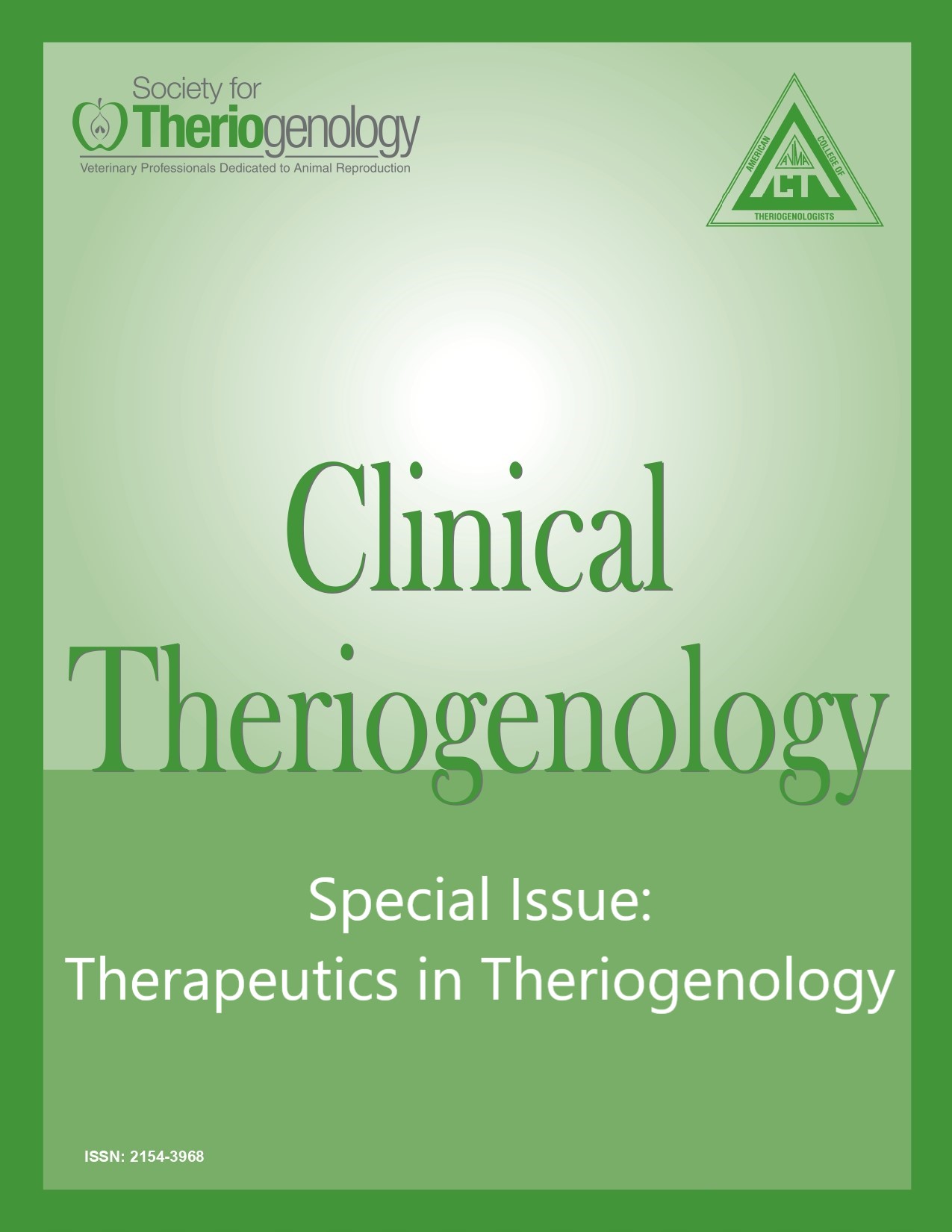Hormonal manipulation of the estrous cycle in mares
Abstract
Hormonal manipulation of the estrous cycle is a mainstay of clinical equine reproduction practice. Purposes of hormonal manipulation include advancement of the breeding season, induction of estrus from anestrus or vernal transition, ovulation timing, estrus synchronization, and estrus suppression. This review summarizes methods and supporting research of hormonal manipulation of the estrous cycle utilized in mares in clinical equine reproduction practice.
Downloads
References

This work is licensed under a Creative Commons Attribution-NonCommercial 4.0 International License.
Authors retain copyright of their work, with first publication rights granted to Clinical Theriogenology. Read more about copyright and licensing here.





